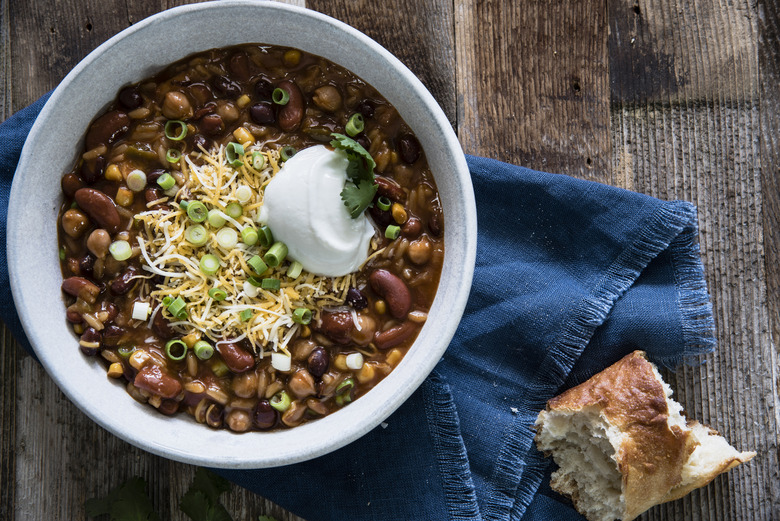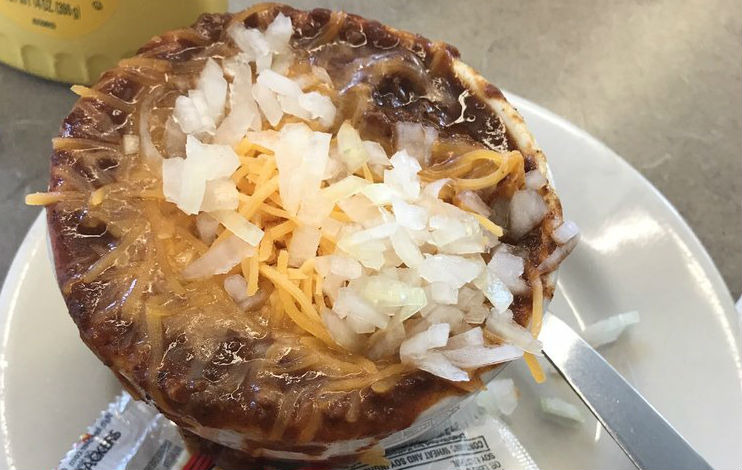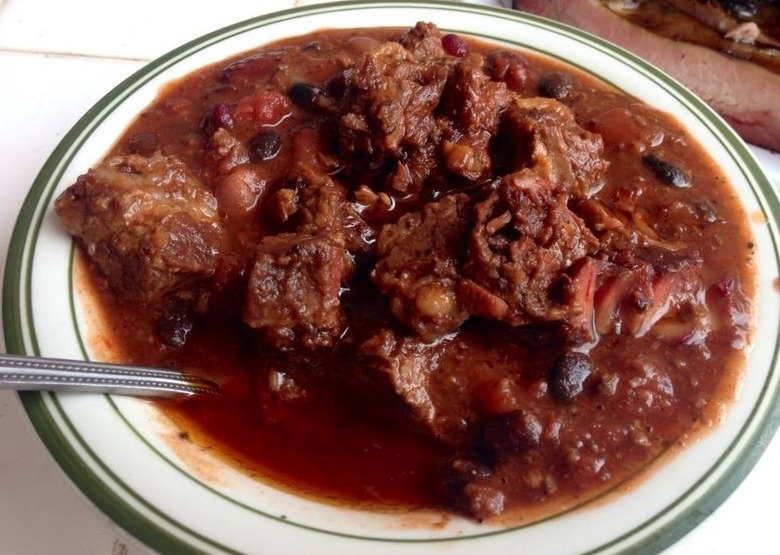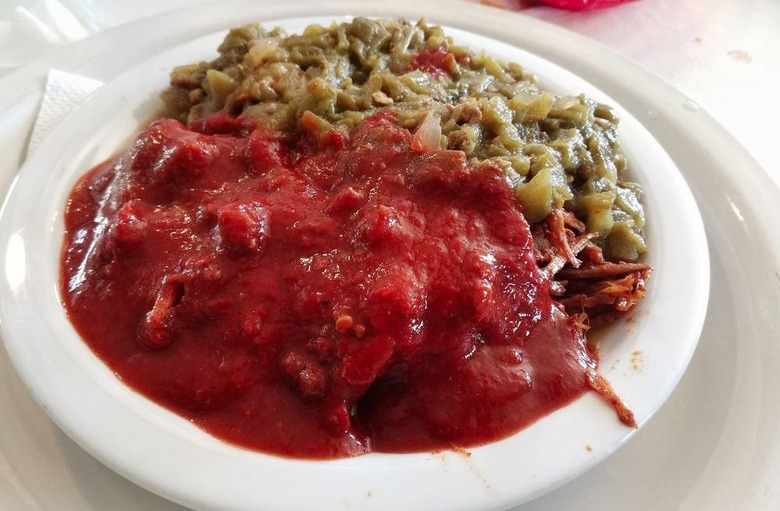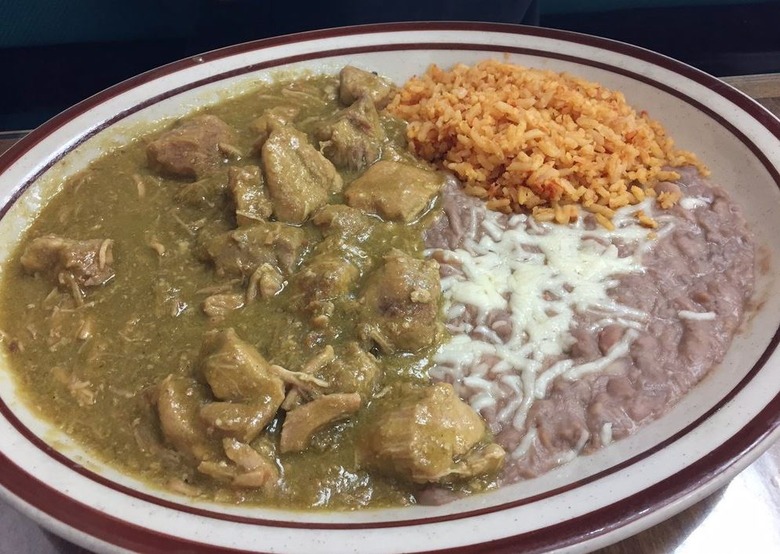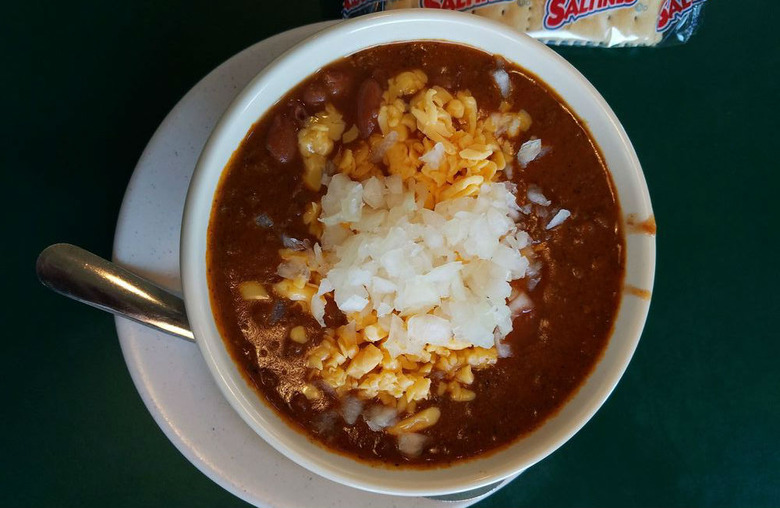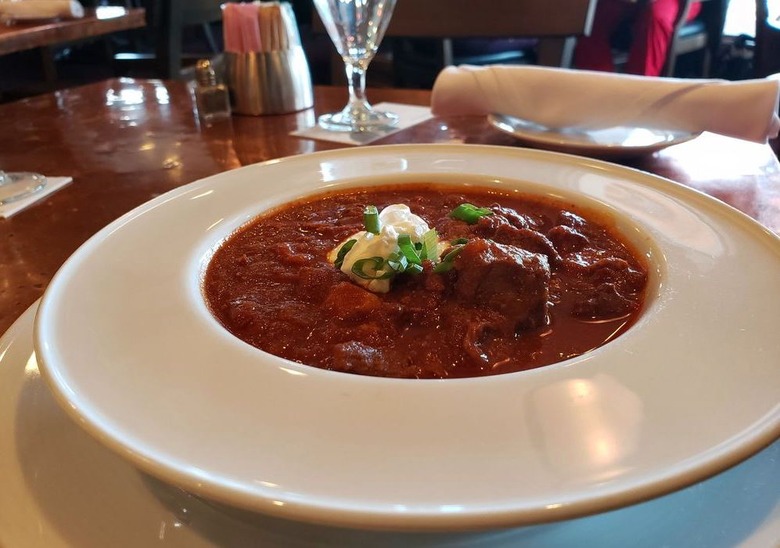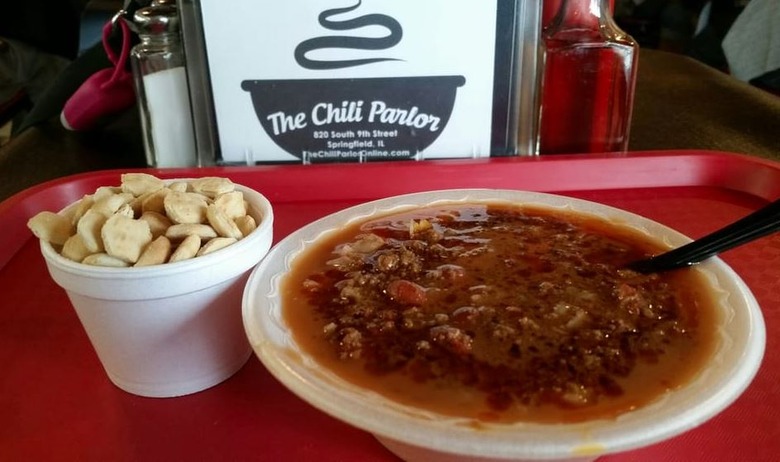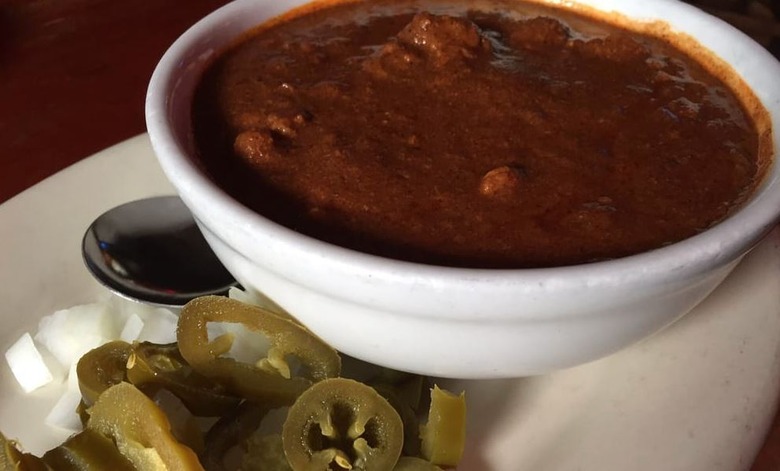A Guide To Regional American Chili Styles
Most of us have a similar mental image of what a bowl of chili should look like: Ground beef in a cumin and chili powder-spiced thick sauce, jazzed up with kidney beans and chunks of tomato with add-ons like shredded cheese, sour cream, onions and jalapeños on the top. In certain parts of the country, however, the word "chili" has a whole other meaning.
We're not just talking about variations like white bean chili or vegetarian chili here. Some regional variations contain no beans, some are more like a sauce, some more closely resemble a beef or pork stew than a bowl of chili, and some are served with a pool of beef fat floating on top.
Chili has been a staple of the American diet for more than 100 years, and over that time, it's morphed and evolved in some interesting ways. Read on to learn about 10 unique regional spins on this beloved dish.
Cincinnati
In Cincinnati, Ohio, chili is more of a beef-based sauce, made with a recipe that contains ground beef, tomato sauce, onions, a little cocoa and spices, including cumin, cinnamon, cayenne, cloves and allspice. It can certainly be eaten in a bowl on its own, but almost no one in the region does that. It's served with a heaping mound of shredded cheddar cheese and is best enjoyed atop spaghetti or on a hot dog with additional toppings including onions and beans. While this dish may sound crazy, it's one of the Midwest's signature dishes.
Detroit
Like Cincinnati chili, Detroit-style chili is also more of a sauce, but this version is Greek-inspired, with paprika and dried oregano bringing different flavors to the recipe. It's also sometimes thickened with a roux, which gives it a more gravy-like consistency, and is usually made with ground beef heart. When it's served atop a hot dog with some mustard and onions at Detroit institutions like American Coney Island and Lafayette Coney Island, it becomes a "coney dog," one of the most iconic dishes in America.
Indiana
Indiana-style chili, also called Hoosier chili, looks like your standard beef-and-bean chili, but with a few key differences. It usually contains tomato or V8 juice along with a little brown sugar, which makes it sweeter. Most importantly, this chili contains pasta, usually broken spaghetti or elbow macaroni. There are as many variations on the dish as there are Hoosiers, but if you ever see macaroni in your chili, you can consider it to be Indiana-style.
Kansas City
Kansas City is a barbecue town, so don't be surprised to find pulled pork, burnt ends or chopped brisket in your chili. Aside from barbecued meats, the recipe is pretty standard, with kidney beans, tomato and a mild, cumin seasoning blend (and occasionally some Kansas City-style barbecue sauce).
New Mexico: Carne Adovada
There are a couple chili versions inherent to New Mexican cuisine, one of which is carne adovada. Carne adovada doesn't look like your standard chili; it's more of a pork stew, cooked in a rich sauce of red chiles, cumin, oregano and other optional spices like coriander until it's falling apart. It can be eaten on its own, but it also makes for a spectacular burrito filling.
New Mexico: Chile Verde
Green chiles are just as quintessential to New Mexican cuisine as red chiles, and carne adovada's green counterpart is called chile verde. It's also made with slow-cooked pork, but the primary flavoring comes from smoky roasted Hatch chiles, mildly spicy green peppers from the town of Hatch. Garlic and broth or water are all that's needed to round out the dish, but some recipes call for tomatillos, cilantro, onions, Mexican oregano or cumin.
Oklahoma
Chili is big in Oklahoma, with just about every regional style openly welcomed. Because of this, there may not be one specific style of chili endemic to Oklahoma, but if you had to pin down "Oklahoma-style" chili, according to Tulsa World, it would most likely be chunks of beef in a bright red sauce with beans, taking inspiration from both Midwestern and Texas traditions.
Rocky Mountains
Chili in the Rocky Mountains is intended to be a rustic dish, something you can picture bubbling away in a big cast-iron pot over a campfire. The recipe itself varies, but it's generally pretty straightforward with beans, canned tomatoes, chiles and spices. There's just one main difference: game meats like elk, deer and antelope are preferred to beef.
Springfield, Illinois
The town of Springfield, Illinois, is pretty famous for its chili — or "chilli," as it's called there. In fact, the town is absolutely loaded with chilli parlors, so much so that in 1993, the Illinois government dubbed it "The Chilli Capital of the World." The chilli here is made with beef suet (fat from around the kidneys), ground beef, tomato sauce, vegetables diced so fine that they vanish, pinto beans upon request, spices and just enough chile powder to make its presence known. It's a rich, beefy style made famous at Springfield institutions like Dew Chilli Parlor and The Chili Parlor, which both serve some of the best chili in America.
Texas
Texans are famously very protective of their state's signature chili style, which is strikingly different than what most non-Texans are accustomed to. In Texas, chili is more properly called chili con carne, and a serving is affectionately dubbed a "bowl of red." Purists will tell you that true Texas chili con carne is made with chunks of stew beef (or occasionally ground chuck), slow-cooked in a rich and spicy sauce made from a variety of whole dried chiles, beef broth, onion, garlic, spices and some masa harina to tighten it up. No tomatoes, and definitely no beans. It's one Southern dish that the rest of the country really needs to try.
More from The Daily Meal:
Regional Chain Restaurants We Wish Were National
The 75 Best Fried Chicken Places in America
10 Things Southerners Always Have on Their Breakfast Table
